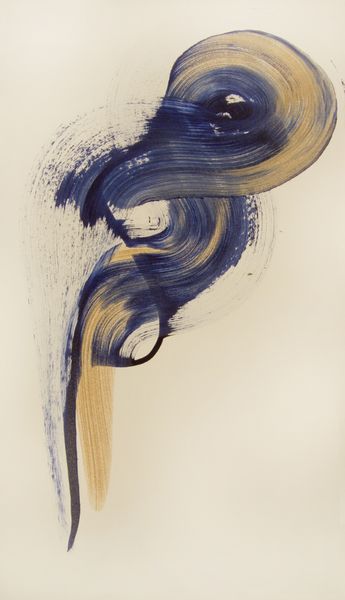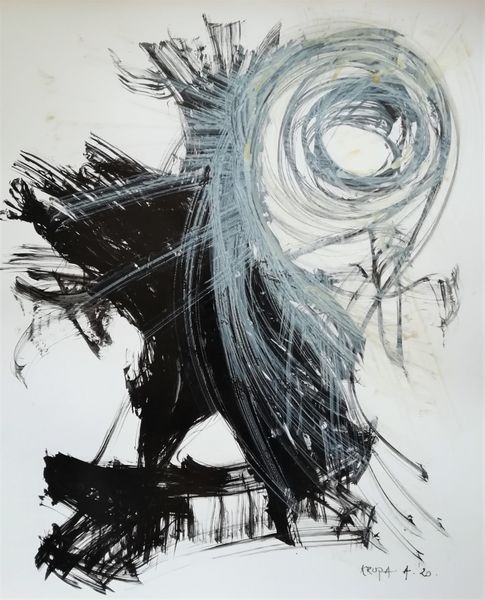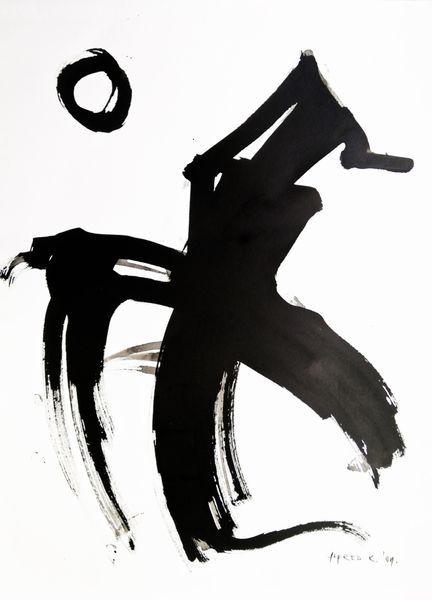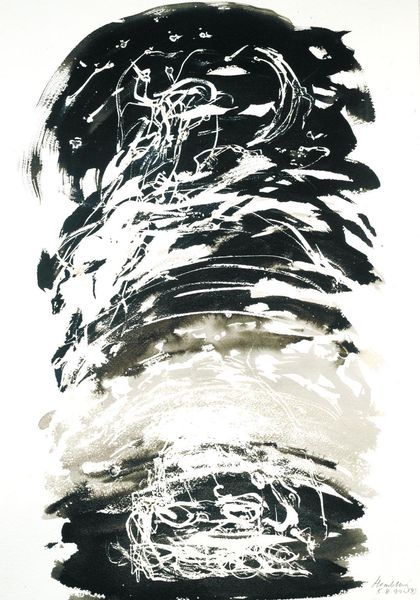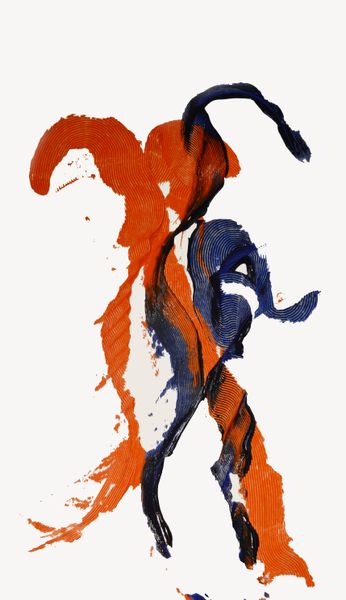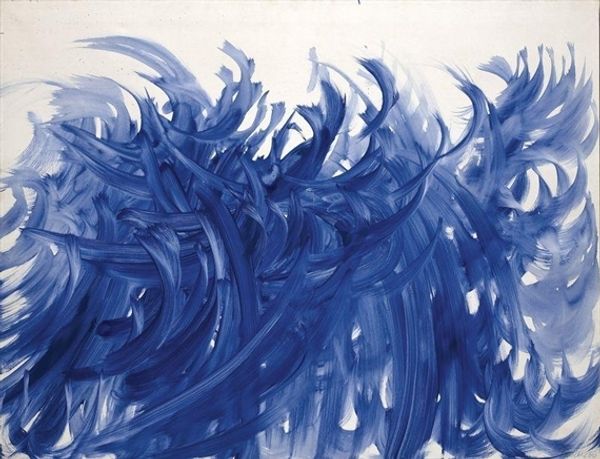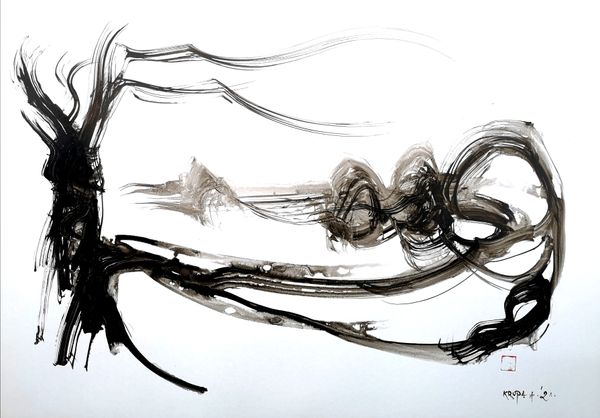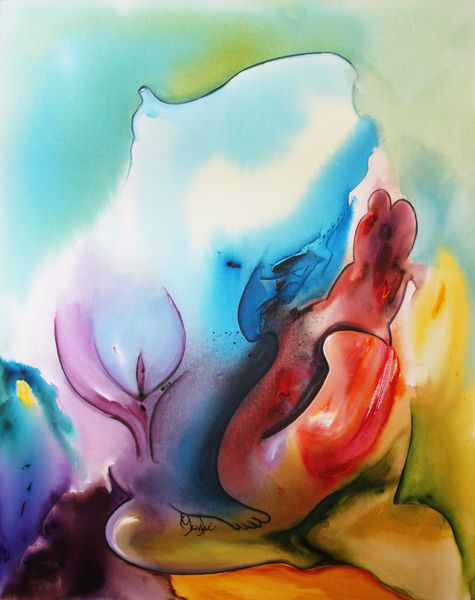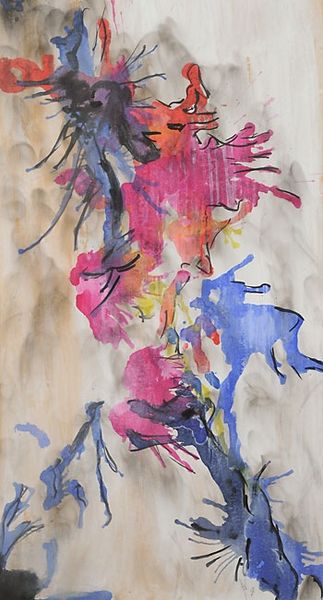
acrylic-paint
#
acrylic
#
acrylic-paint
#
form
#
abstraction
#
line
Dimensions: 168 x 96 cm
Copyright: Charles Gibbons,Fair Use
Curator: I am struck by the fluid motion—it's as though time itself is being captured within the elegant gesture. Editor: That's an interesting reaction. Charles Gibbons created "After the Rain 2" in 2010. It is painted using acrylic, and its simple composition and colors definitely evoke tranquility. I’m drawn to it, initially, by the bold singularity of its sweeping form. Curator: For me, it’s almost calligraphic. The brushstrokes create a form of mark-making that reaches far back, but also feels strikingly modern. Do you see, in the bold strokes and the restrained palette, something of the intersection of the personal and the universal? It begs the questions, doesn't it, how experiences shape us. Editor: I agree it resembles a script—but I feel something more primal at play, like the continuous circling and looping of sacred knots from around the world, the endless forms symbolize time and infinity. The work resonates across different cultural understandings. The layering and mixing of blue pigment—from light to dark—seems evocative, too. Does the artwork reference collective memory, or historical experience, in your understanding? Curator: Absolutely. There's an emotional weight, as well. Post-colonialism has been an enormous influence, particularly with its discussion around new identities that break with past modes of cultural construction and thought. Editor: But, how does the form challenge—or perhaps perpetuate—Western dominance in its modes of abstract expression? Is this something from within that dialogue or in opposition to it? Curator: Well, I wouldn’t propose that the single line somehow resolves a colonial inheritance, of course! What I see is an echo that makes one aware, even implicitly, that nothing appears in a vacuum. Editor: Yes, it’s undeniable that images, however abstract, exist in conversation with one another. Even this seeming “simple” work manages a powerful kind of historical compression, with all the implied tension it conveys. Curator: I'll walk away considering more the legacy of form-making as political and as always speaking. Editor: I'll be carrying away the feeling that Gibbons created a bold form from an ancient symbol to something fresh.
Comments
No comments
Be the first to comment and join the conversation on the ultimate creative platform.
